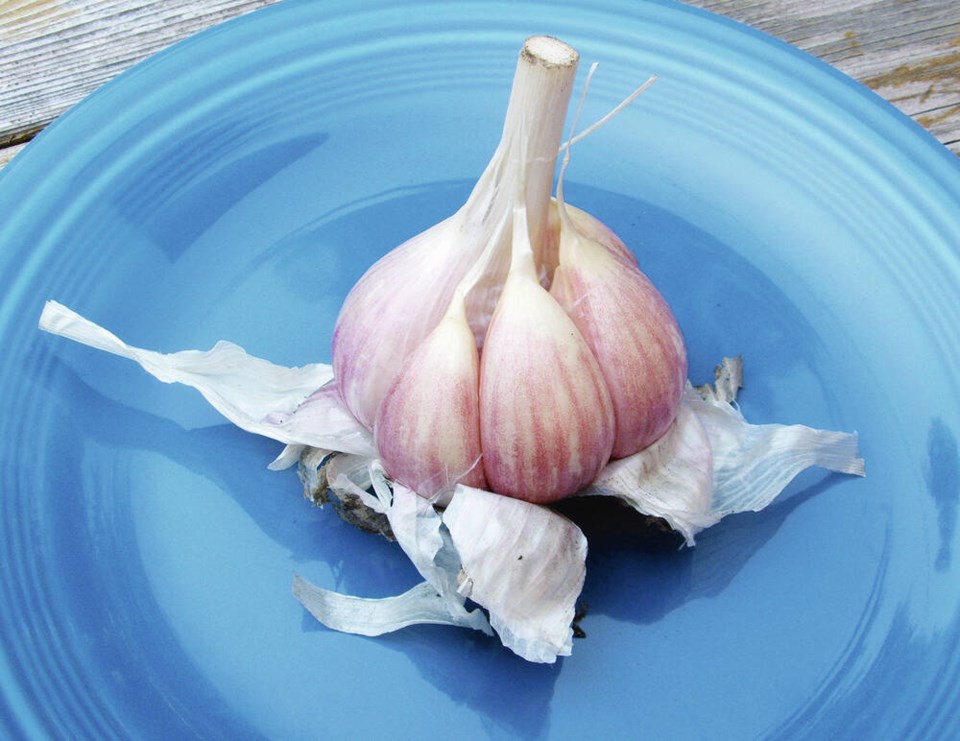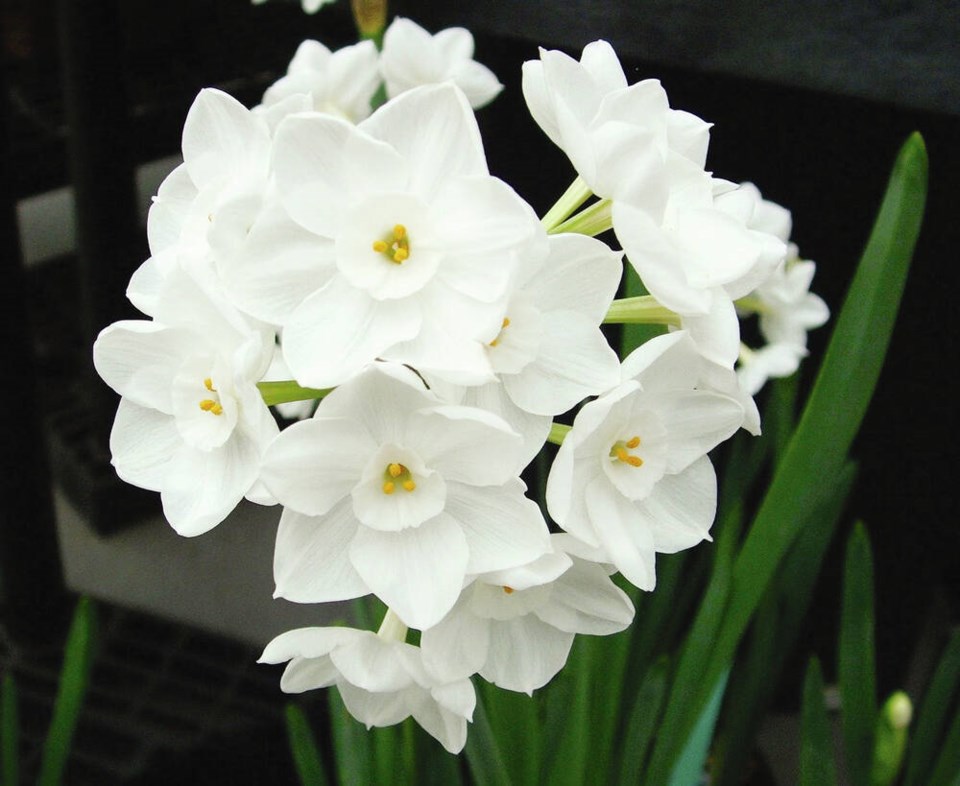Dear Helen: What is the best time to plant “Paperwhite” narcissus bulbs? Do you plant them in soil or water? Do all varieties produce fragrant flowers?
B.L
These indoor bulbs can be planted from September into early December. Earlier plantings take five to six weeks to bloom, but as the planting season progresses, the bulbs take less and less time to flower.
I prefer planting in soil. I’ve observed that soil-grown Paperwhites produce longer-lasting flowers. Using pots with drainage holes, I position the bulbs to leave about a third of their depth exposed above the planting mix and firm the mix well around the bulbs.
During the rooting period, the planted pot is located in a dim, cool spot with the soil kept barely moist. Once top growth appears and begins to lengthen, I move the pot gradually into brighter light and start watering regularly enough to maintain consistently modest moisture levels.
Paperwhites are more commonly set on a bed of clean pebbles in a bowl at least 10 cm deep. The bulbs are stabilized with more pebbles arranged over the lower third of their depth. Rooting is initiated with water added to the bowl and maintained at the level of the bulb bases.
The planted bowl is kept in a cool, dark place until a root mass can be seen when the pebbles are pushed carefully aside —or more easily seen if the bowl is clear glass. Then the container can be brought gradually into brighter light as foliage deveops and flower stems lengthen
Most Paperwhite flowers are fragrant. An exception is Imbal, a variety with very little scent. It’s a good choice for people who love the easily grown indoor flowers but find the fragrance of other varieties overwhelming or even irritating.
Dear Helen: My lettuce plantings have done well this year, except for some older plants that wilted and stopped growing. When I pulled the flagging plants up, I found the roots were infested with a mass of woolly aphids. Any comments or advice?
J.F.
I’ve had the displeasure of finding root aphids on lettuce plants in mid-collapse only once. The few lettuces were growing at a dryish edge of a vegetable plot, in rather sub-optimal conditions.
The primary hosts of these root aphids are poplar trees, where the insect eggs over-winter in cracks in the tree bark. In spring the eggs hatch, develop into adults, reproduce, and migrate to secondary hosts, including young lettuce and other salad plants.
Growing lettuce as far away as possible from poplars is an important, if not always possible, preventive measure. Another is to grow lettuce under row covers or, in the heat of summer, shade cloth, to bar access to the plants.
In consistently and adequately moist soils that are fertile and humus-rich, young lettuces can often grow fast enough to produce usable greens before the aphid root feeding wilts them.
Adequate soil moisture is essential, as is the avoidance of a soil over-loaded with nitrogen, which can make green leafy vegetables soft and lush — and susceptible to insect pest predation.
Dear Helen: Do you keep and use seeds from your pumpkins? If so, how?
N.F.
To create a tasty snack from raw pumpkin seeds, I separate the seeds from the fibres holding them in place and put them on a broad pie plate or baking sheet. I don’t butter or oil the pan, and I don’t toss or drizzle the seeds with oil. Instead, I dust them with freshly grated salt and bake at 250 to 300 F for around 20 minutes. Then I loosen them and mix them up a bit, and taste-test as they continue roasting until they have the desired crunchiness and full, nutty flavour.

Dear Helen: Is it too late to plant garlic? For how long should a planting site be left free of garlic before using the spot again for this crop?
S.L.
It’s not too late, but plant as soon as possible to give the cloves time to establish roots before freezing weather.
A four-year break between garlic plantings in any one site is recommended. This interval does not provide complete protection against all root and other diseases. Some spread on the wind.
Plant in a site that drains efficiently of excess moisture, in a soil well plumped with compost. Check each clove before planting to make sure it is free of any blotches.




